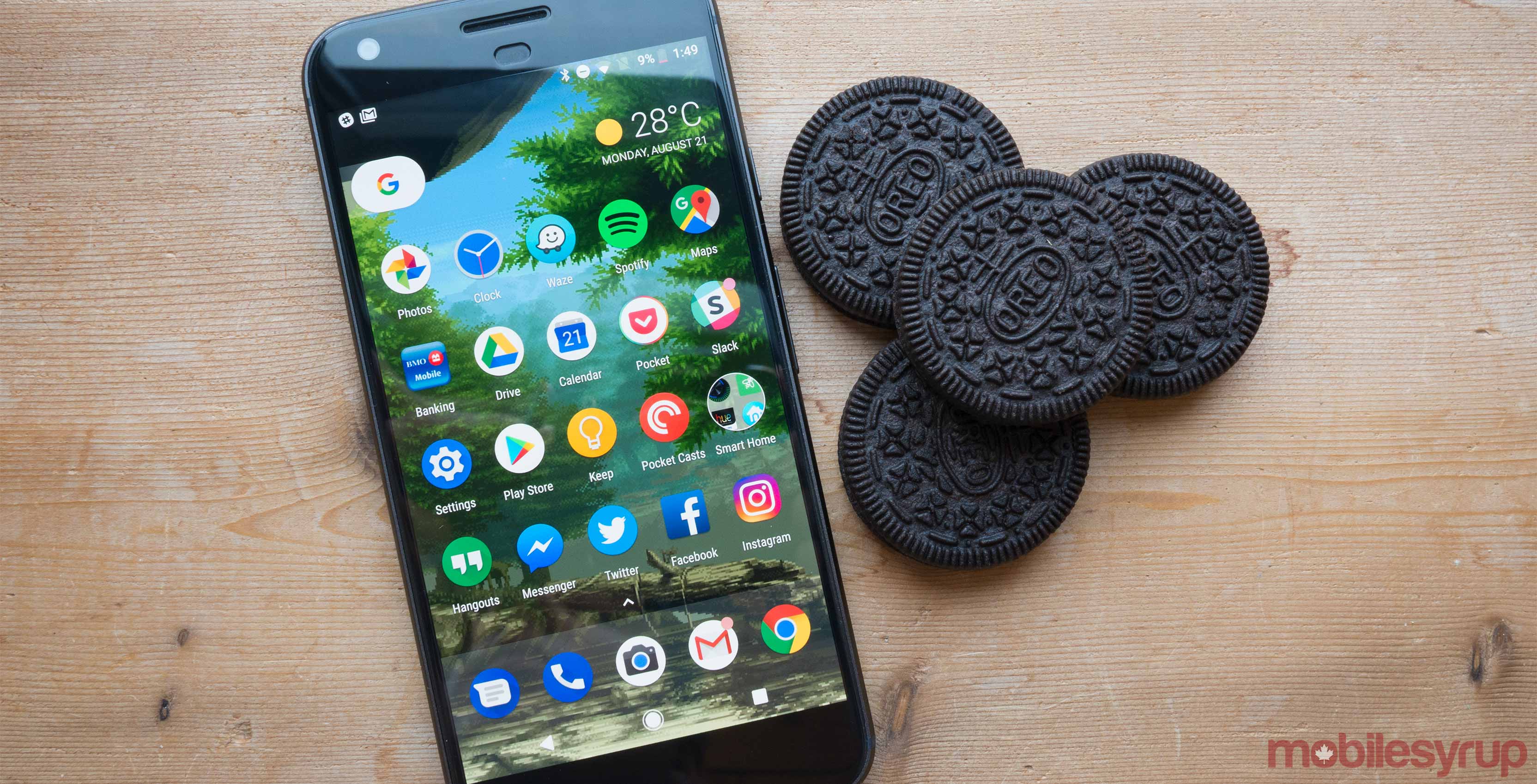Android 8.0 Oreo is the successor to the Nougat version. Google has named versions with the first letter of the alphabet, starting with Android Cupcake, followed by Donut, Eclair, Froyo, Gingerbread, Honeycomb, Ice Cream Sandwich, Jelly Bean, KitKat, Lollipop, Marshmallow and Nougat. Now it features Oreo, which has significant features for phones and tablets, where the platform will now be more secure, faster, more powerful, more efficient and offer a better multitasking system.

The new update of Google’s mobile operating system has been available for a couple of months in its developing beta mode. And is expected to officially arrive to Android devices later this year.
This is the most significant list of this new version:
1. There will no longer be an option to “install from unknown sources”.
It is clear that not all third-party apps are malicious, but it is clear that apps installed off the official site could well cause system problems for a variety of reasons. Before you could install an app, an APK file, from the browser, either using Bluetooth or even downloading it using another app. You can not do this anymore. In Android 8.0 there is a feature that says “Install other apps,” where the user must manually allow third-party apps to be installed from various sources.
2. Autofill API Framework
It has always been advised to use different passwords for online accounts and to change them frequently. This, however, is complicated for users who continuously forget about changes in their passwords. To follow best practices and keep accounts secure, many users use notes in different apps, even in ones that are precisely password managers.
Some administrator programs use the information to fill the field automatically in the forms where these passwords are requested. However, in Android 8.0, password handlers will not require the accessibility features of Android to fill out forms.
Version 8.0 now has a secure AutoFill API, which allows the password manager to use the user to save different types of data according to the security needed, either for online sites or to give card numbers Credit, and so on. And this will work throughout the system.
3. Picture-in-Picture
With Android 8.0 you can watch a video on YouTube and have for example open Word with a document, or be chatting on WhastApp, for example, simultaneously. This is called the Picture In Picture (PIP) feature. It is one of the most interesting and attractive of this new version of the operating system.
4. Google Play Protect
One problem that has been attacked in this version is the increasing amount of malware. Android 8.0 has something called Google Play Protect, which means that a system that is always active in the system allows to detect and delete apps that are considered harmful to the system, even considering that there are already about 50 billion apps, even if it sounds Incredible amount.
5. Wi-Fi Aware (Neighborhood Aware Networking – NAN)
Android Oreo adds support for a new connectivity feature called Wi-Fi Aware, also known as Neighborhood Aware Networking (NAN), which allows apps and devices to automatically find, connect, and even share data with other devices without having to An Internet access point or use the cellular data network.
Wi-Fi Aware is basically a combination of WiFi Direct and Nearby, which offers a more reliable connection compared to WiFi P2P, allowing users to share data at high speeds over longer distances, compared to BlueTooth.
6. Android Instant Apps
In Oreo you can access a range of Instant Apps without having to download them. This feature was unveiled in May 2016 and was called Android Instant Apps. It will now be available for about 500 million devices globally, allowing users to launch certain apps within Google Play without having to download them. Users can launch certain apps on Google Play without having to download them.
This option will be fundamental when the device has little storage space or you simply want to test the app without necessarily installing the full version.
7. Battery-Saving Background Limits
Before Oreo, developers could create apps that would listen to parts of the system or make changes to the Android device such as turning off or turning on WiFi under certain conditions, causing a negative impact on system performance or lifetime Of the battery.
Apart from this, Oreo will limit some background services when, for example, an app is not being used. For example, if an app is playing music, it will not be affected, but will limit Instagram when it does not need to be refreshed, thus allowing the system to use less battery power and just flush its services when needed.
8. Intelligent text selection based on Artificial Intelligence
Oreo now has a feature called “Smart Text Selection”: which uses Google machine learning to detect when you select something like the physical address, the email address, names or phone numbers and then, automatically, will suggest the relevant information in Other apps.
For example, if you double tap a text and select the address of a restaurant that sent you a friend, Google will realize it and will automatically send you the way to get there using the maps. This feature will be that of an assistant, but it does not hurt to have more than one option to solve the same problem.
9. Notification Dots
This is a characteristic that has been asked many times, and it happens when one ends already annoyed of so many notifications that are received daily. With Android Oreo this will not be a problem, because it introduces Notification Dots, which offers to handle each app individually so that the user has control of how many and which notifications he wants to receive.
10. Find my device
Google now has a new feature called “Find my Device”, which is similar to the one used in Apple (Find my iPhone), and allows people to locate and block, as well as erase all the Device information when it is lost or stolen.
11. New emojis and downloadable fonts
Oreo introduces new emojis, 60 to be exact. The update offers new color support for apps and the ability to change or animate the shape of icons in apps. Downloadable fonts, on the other hand, are not for end users, but developers can send their apps without having to send the package of fonts they use. These will be downloaded by a vendor who shares and supports these new libraries. In fact, the same can be done with the new emojis.
Clearly Android Oreo seems to be seen as an already mature version of Google’s mobile operating system. We will see the system finally working on the new devices of the year 2018 and we can see the functionality of the system as a whole. Meanwhile, it gives the impression that all these new features are really important for the future of Android’s own development.














